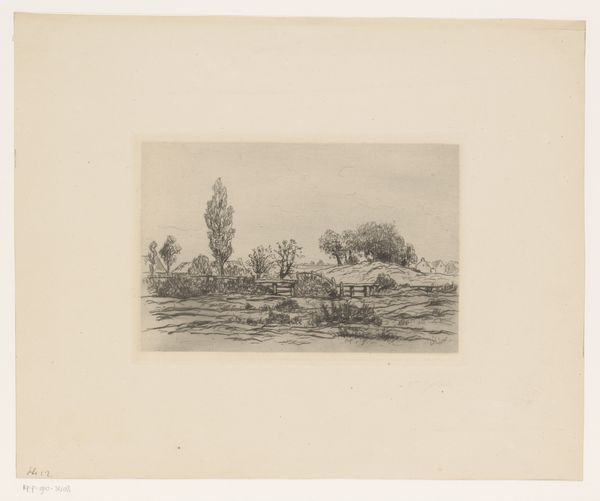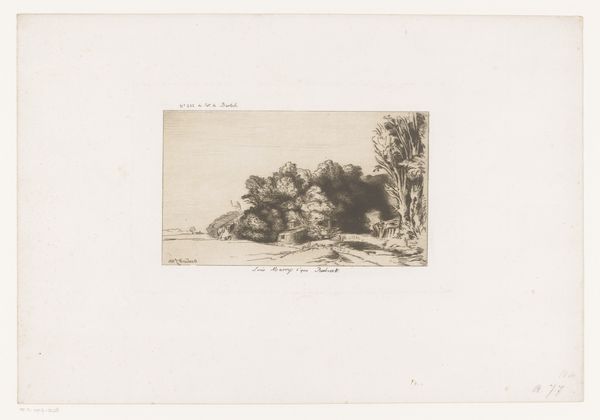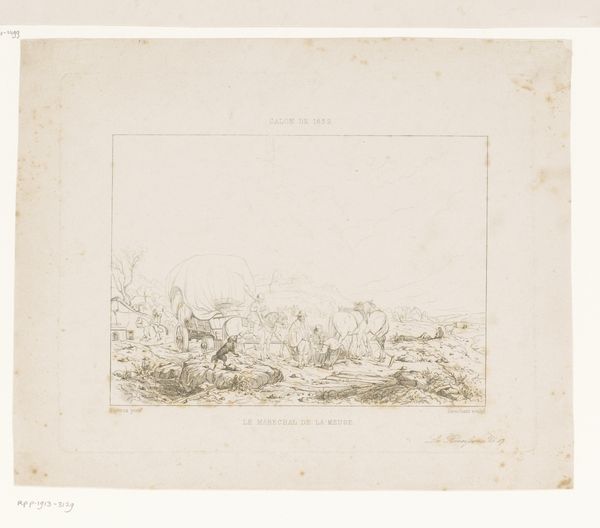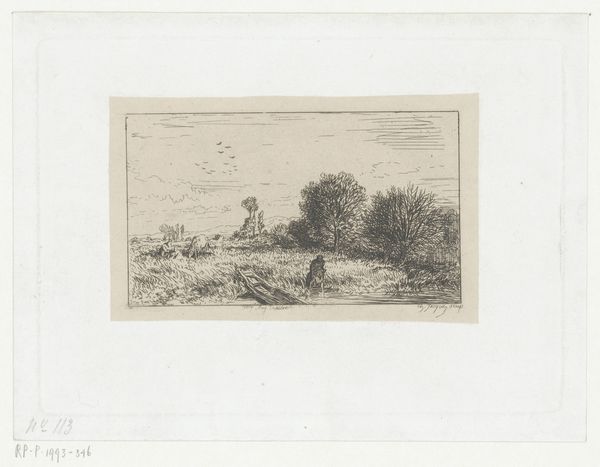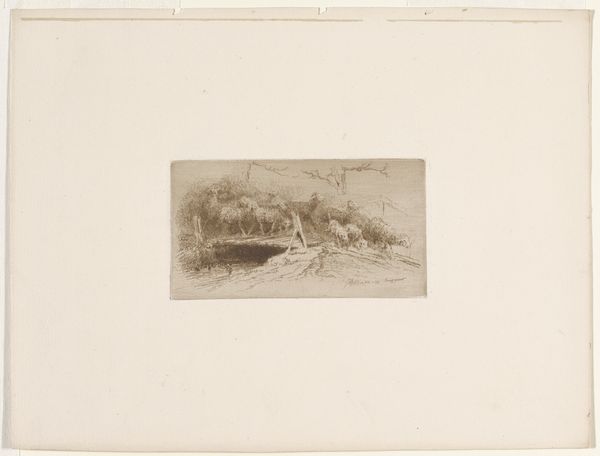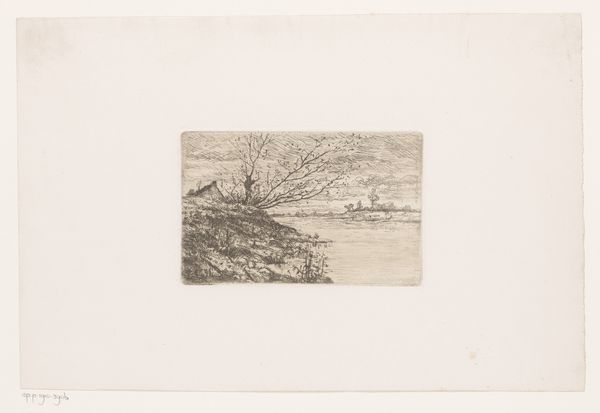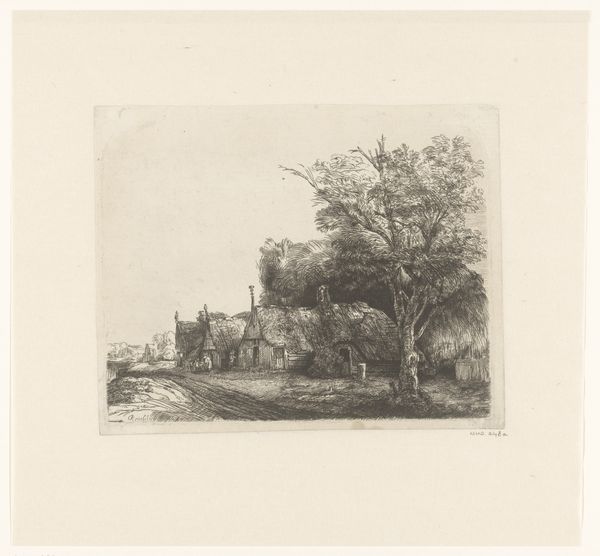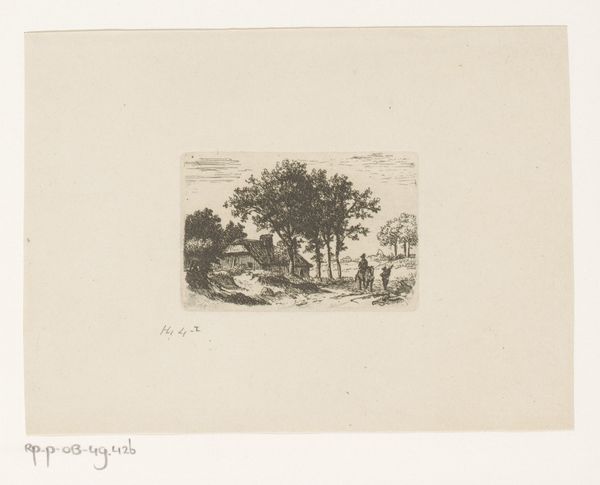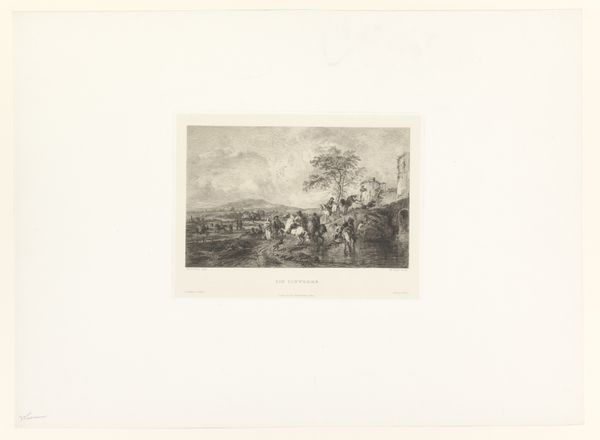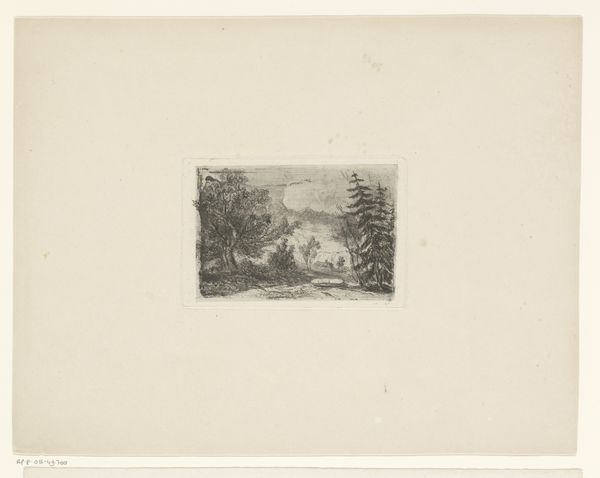
#
photo of handprinted image
#
light pencil work
#
ink paper printed
#
pencil sketch
#
light coloured
#
ink drawing experimentation
#
ink colored
#
sketchbook drawing
#
watercolour illustration
#
watercolor
Dimensions: height 310 mm, width 477 mm
Copyright: Rijks Museum: Open Domain
Curator: Welcome. Here we have a drawing entitled "Twee liggende koeien", or "Two Lying Cows," attributed to Jean Augustin Daiwaille, dating from approximately 1809 to 1850. Editor: It's delicate. A rather placid, pastoral scene with subtle tonal variations and, dare I say, rather elegant composition. It gives off an interesting sense of quiet observation. Curator: Indeed. Note the materials—ink on paper, executed with considerable light pencil work. The 'lightness' lends itself to the efficient duplication process. Its very nature speaks to broader socio-economic conditions. Editor: I appreciate your angle, but my first inclination steers me towards a discussion on spatial representation. How the figures of the cows and that beautifully skeletal tree are rendered... the foreground against the implied distance. See how the artist employs line weight? It dictates depth masterfully. Curator: Certainly, we can't disregard the interplay of line and form, but the materiality prompts questions of function and the possible democratisation of image making at this period. How did it circulate? Was it part of a study? Who owned it? How did the consumption of art shift during that era? These are crucial to comprehend. Editor: Maybe so. The socio-historical aspects enhance appreciation. However, the very stark simplicity speaks more loudly to me: the light catching the flanks of the reclining animals, and the contrast created... This adds greatly to its serene, idyllic feeling. The formal elements create impact above all. Curator: And let's not forget the implications behind sketching farm animals. Dairy production had profound importance at that time; this wasn't just idyllic fancy. There was also complex labor involved in the image itself that cannot be overlooked! The choice of such mundane subject matter raises concerns about artistic movements which directly relate to production itself. Editor: I will concede that Daiwaille gives us a good grounding from which we can launch these kinds of insights! Curator: Precisely! Each method sheds some very important illumination when looking deeper into this "simple" work on paper.
Comments
No comments
Be the first to comment and join the conversation on the ultimate creative platform.
